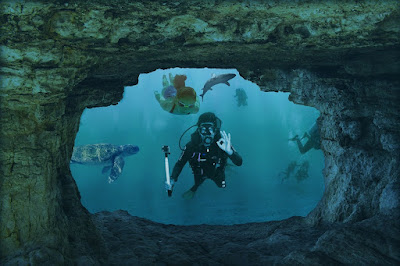Deep-sea divers who explore underwater caves and wrecks undertake careful risk management strategies to mitigate the inherent dangers of these environments. Here are some key measures they employ:
Extensive Training: Deep-sea divers undergo specialized training to acquire the skills necessary for cave and wreck diving. They learn advanced diving techniques, buoyancy control, navigation, and emergency procedures specific to these environments. Training includes simulated scenarios and supervised dives to build competence and confidence.
Cave and Wreck Awareness: Divers thoroughly study the cave or wreck they plan to explore. They assess potential risks such as narrow passages, entanglement hazards, overhead environments, silt disturbances, and low visibility. Understanding the layout and potential hazards allows divers to plan their routes and react appropriately during the dive.
Equipment Selection: Divers use specialized equipment suitable for cave and wreck diving. This may include redundant gas supply systems, underwater lights, reel or line markers for navigation, and cutting tools in case of entanglement. Equipment undergoes regular maintenance to ensure reliability.
Team Communication and Protocols: Divers typically dive in teams for safety. They establish clear communication protocols and use hand signals or underwater communication devices to maintain constant contact. Team members establish buddy systems, staying within sight and reach of each other, and maintain awareness of their partner's status and location.
Proper Gas Management: Cave and wreck divers pay meticulous attention to gas management. They calculate gas consumption, plan their dives accordingly, and carry extra reserves to account for potential delays or emergencies. They adhere to established guidelines for decompression procedures when required.
Line and Guideline Use: Divers use guidelines or lines to establish a path for navigation and to ensure a safe return to the entry or exit point. They deploy these lines securely and follow them during the dive, minimizing the risk of disorientation or getting lost in complex cave systems or wrecks.
Emergency Preparedness: Deep-sea divers are trained to handle emergency situations. They practice emergency drills and carry necessary safety equipment such as surface marker buoys, redundant dive computers, and first aid kits. Divers also maintain situational awareness, monitoring their air supply, depth, and time limits to prevent decompression sickness.
Experience and Mentorship: Deep-sea divers gain experience gradually, starting with less challenging dives and progressively advancing to more complex environments. They often seek mentorship from experienced cave or wreck divers who provide guidance, share knowledge, and impart best practices to ensure safe exploration.
By following these safety measures, deep-sea divers minimize risks associated with exploring underwater caves and wrecks. Their focus on training, situational awareness, communication, and equipment preparation allows them to explore these fascinating environments while prioritizing safety and risk management.
Photo: Pixabay (free)

No comments:
Post a Comment
Thanks for your comment.